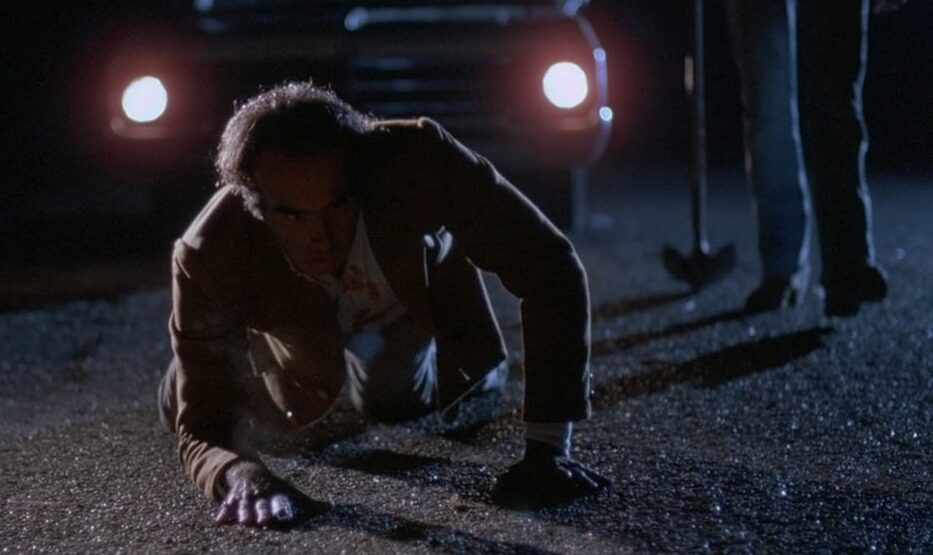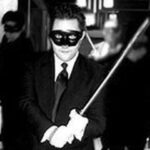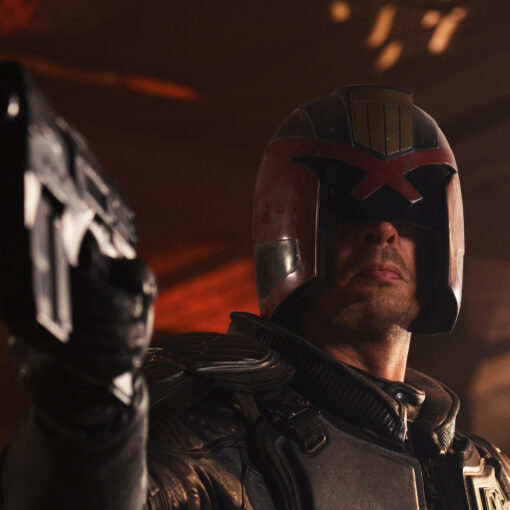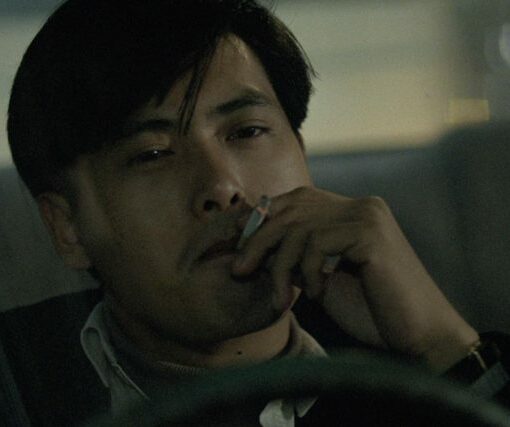To celebrate the month of Noirvember I wanted to delve into the first wave of film noir and its post-modern form that is every bit as exciting. Neo Noir is the (usually) colorized counterpart to the classical black and white films of the 40s-late 50s. They often feature the same stylized chiaroscuro lighting, twisted storylines and shady characters and range from traditional private eye films (The Long Goodbye, Chinatown) to erotic thrillers (Body Heat, Basic Insinct) to sci-fi adventures (Blade Runner, Dark City). The main difference between classical noir and neo noir is the fact that viewers are made to be aware they’re watching a post-modern take on those pulpy stories. These films re-invent, deconstruct and comment on the themes of classic noir while taking it to a new place.
The Coen Brothers debut film Blood Simple (1984) is a perfect representation of the Neo-noir style. It is very much in the vein of the standard noir crime thrillers in that it deals with a romantic trist, murder and doublecrosses. What the Coens brought to the proceedings was their film geek sensibility, unique brand of dark humor and ear for equally offbeat and interesting dialogue.
Following an introduction with an oddly comical narration, the movie’s opening credits is visually arresting. We are inside a car driving in the rain at night. As cars pass by, the windshield wipers fly back and forth, the bright lights of oncoming vehicles flash and the credits appear. It’s a really nice nod to the beginning of Robert Aldrich’s atomic noir Kiss Me Deadly which begins with a similar unusual credits sequence and point of view shot.

While driving along with her lover Ray (John Getz), Abby (Frances McDormand) notices they’re being followed by a mysterious looking VW bug, but cant see the driver as it putters by into the night. Ray is a bartender at the club owned by Abby’s estranged husband Julian Marty (Dan Hedaya) which is how they met. After spending the night at a hotel together, Marty calls the room, letting them know he’s aware of their sneaking around behind his back. He has hired Loren Visser (M Emmett Walsh) a private eye/scumbag to spy on Abby and Ray and wants him to catch them in the act by taking a photo. One night, Marty confronts Ray at the bar and tells him not to trust Abby but Ray angrily dismisses him then quits. Marty is seething with anger and wants to kill Abby and Ray for their affair. In the meantime, Visser comes up with an allibi for Marty, a little trip to Corpus Christi. He ells him to “get himself noticed” while he takes care of his “problem”. Visser then breaks into Abby’s home, steals her gun, takes a picture of her and Ray in bed and doctors the photo showing them appearing to be dead complete with bullet holes and blood. Visser stops by the bar to give Marty the photos to get his $10,000 dollars, then kills him leaving Abby’s gun behind for the police to find.

When Ray shows up at the bar he discovers Marty dead thinking Abby was the one who did it after finding her gun on the floor. In a panic he cleans up the bloody scene and drives to a large field in the country to dispose of Marty’s body but soon discovers he’s still alive. Ray is almost seen by a passing motorist in a suspenseful roadside sequence that was reused in The Coens’ 1996 crime film Fargo. The next day Ray calls Abby and she thanks him, but he misinterprets it as being because he took part in covering up Marty’s murder. Meanwhile, Visser burns up the photos he took but realizes one is missing and that he also left his cigarette lighter in Marty’s office the night he killed him. The disconnect in communication between Ray and Abby leaves them unaware of the circumstances of what’s really happening as he assumes she was the one who killed Marty, and she in turn doesn’t know he has covered it up because he loves her. Realizing he has to cut off any loose ends that could connect him to Marty’s death, Visser begins stalking Abby and Ray planning to get rid of them for real.

The Coen Brothers (Joel & Ethan) began their film careers as writer-directors with a bang as is evident in the production of Blood Simple which established them as exceptional craftsmen. Their inventive and amazingly kinetic shots (which were partly influenced by their friend Sam Raimi, who Joel had worked with as editor on Evil Dead) were there from the start. The photography by DP Barry Sonenfeld also elevates the movie out of the typical low budget independent cinema of the time it was made. The visuals are bold and expressive in every scene. The use of urban noir motifs mixed in with the sunbaked Texas country backdrop are extremely captivating. Composer Carter Burwell’s score which features the piano based track “The Stranger’s Theme” is an effective mood enchancer that plays incredibly well with the images on the screen, creating a stronger feel of suspense but also a slightly romantic effect.






